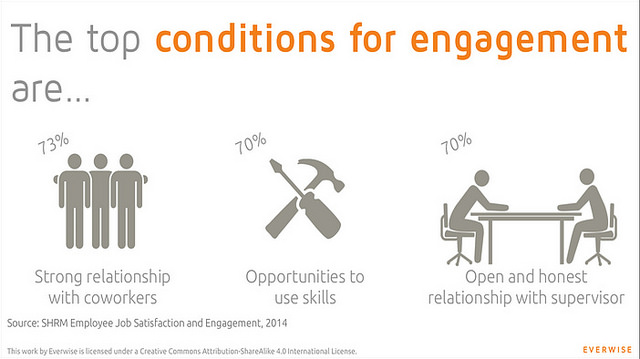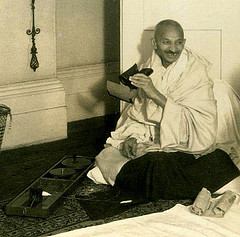|
|
|
Thursday, October 4th, 2018

I wrote on this a bit last week.
When it comes to open floor plans you have the ability to break concentration pretty quickly.
Maybe you ask a work-related question, or you see someone walk by who catches your attention, or it could be the other meeting occurring five feet away that draws your attention.
All in all, it can add up to a loud and unproductive environment.
That said, there is another issue at hand: the collective focus of our country.
I have political leanings (most folks do), but I don’t address them in this forum.
However, I have found it is very difficult to focus with the hyper-political environment we are in right now.
The latest on Trump, Supreme Court nominees, and international trade dominate the conversations. Even at work, I have found it can be a minefield to even poke into certain topics. How do we overcome this?
One thing I have started doing is actually turning off the news and not keeping up with every little change to the topics of the day; it can be a bit freeing. At the same time, I am not in a position where I can be completely ignorant of what is happening.
I have also found that there is common ground among my co-workers on how divisive it has all become.
And it is a lot harder to push your politics on someone when they are standing right in front of you. The shield of anonymity is gone.
I have found that reading negative press also has the added effect of making me less productive.
I focus on the negative and it goes into my head. What good is all that?
So maybe next week we can focus on the positive and move forward?
Most of us get presidential alerts on our phone now, but we can also turn them off.
Image credit: VirtualWolf
Posted in Communication, Personal Growth, Ryan's Journal | No Comments »
Monday, May 14th, 2018

Poking through 11+ years of posts I find information that’s as useful now as when it was written.
Golden Oldies is a collection of the most relevant and timeless posts during that time.
Coaches, pundits, etc., offer advice on how to handle disrespect, bullying and other negative behavior, some of which is very good. But the approach I like best is summed up in this story of Gandhi and his professor.
The difference between what Gandhi did and what most people do today is that it involved no anger or four letter words; Gandhi used his intelligence to turn the professors own belittling comments against him — and he did it with grace.
Read other Golden Oldies here.
I am frequently asked how to deal with arrogance, disrespect and other antisocial behavior.
Often, the people asking are looking for approaches that echo the classy insults post from 2009.
KG Charles-Harris recently provided a brilliant example of how to handle such comments, with class and amiable good will—although the recipient might not agree.
While I doubt that the following actually happened, that doesn’t change the intelligence and elegance behind the responses.
When Gandhi was studying law at the University College of London, there was a professor, whose last name was Peters, who felt animosity for Gandhi, and because Gandhi never lowered his head towards him, their “arguments” were very common.
One day, Mr. Peters was having lunch at the dining room of the University and Gandhi came along with his tray and sat next to the professor. The professor, in his arrogance, said, “Mr. Gandhi: you do not understand… a pig and a bird do not sit together to eat,” to which Gandhi replies, “You do not worry professor, I’ll fly away ,” and he went and sat at another table.
Mr. Peters, green of rage, decides to take revenge on the next test, but Gandhi responds brilliantly to all questions. Then, Mr. Peters asked him the following question: “Mr Gandhi, if you are walking down the street and find a package, and within it there is a bag of wisdom and another bag with a lot of money; which one will you take?”
Without hesitating, Gandhi responded, “The one with the money, of course.”
Mr. Peters, smiling, said, “I, in your place, would have taken the wisdom, don’t you think?”
“Each one takes what one doesn’t have,” responded Gandhi indifferently.
Mr. Peters, already hysteric, writes on the exam sheet the word “idiot” and gives it to Gandhi. Gandhi takes the exam sheet and sits down.
A few minutes later, Gandhi goes to the professor and says, “Mr. Peters, you signed the sheet, but you did not give me the grade.”
The ‘trick’ is responding to the actual content, rather than the intent or the person, and turning the put-downs back on the speaker.
A good lesson for us all.
Image credit: Okinawa Soba
Posted in Communication, Golden Oldies, Personal Growth, Role Models | No Comments »
Wednesday, January 10th, 2018

I’ve written a lot on the both the why and how of face-to-face communications, so today will be a short post, with links to previous content.
Do you wonder why 69% of managers aren’t comfortable talking with their team?
Perhaps it’s because they aren’t comfortable talking period.
What’s going on? What happened to verbal communications a la conversation?
It’s not just tech, although tech has made it much worse.
Modern managers have avoided discussions with employees, especially about performance issues.
Before computers they tried to manage by memo; post computer by email and most recently by texting. None of them work.
Problem 1: screens kill empathy and empathy underlies all positive human interactions.
Solution: Turn off your screens. And if you believe everything will fall apart if you are unavailable for 20 minutes here and 40 minutes there each day then your organization is in far worse shape than you realize.
Problem 2: AMS; it stands for assumption, manipulation, self-fulfilling prophesy.
Solution: Build internal awareness of your AMS (we all do it), then work to control it. Don’t try to completely eradicate it; it’s a waste of effort.
Problem 3: Two-way street.
Solution: Learn to listen, not just hear. Active listening is at least 50%, often more; if you talk, but don’t listen it isn’t a conversation.
Good communicating is like writing good code.
You can study it forever, but eventually you need to get out there and just do it.
And the more proficient you become the more you will enjoy it.
Scary? Sure.
But not nearly as scary as stunting your future, both at work and in your wider world.
Image credit: Flickinpicks
Posted in Communication, Motivation, Personal Growth, Retention | No Comments »
Tuesday, January 9th, 2018

This is one of the worst stats about managers I’ve come across recently.
… 69% of respondents [US managers] said that they found “communicating in general” to be the hardest part about communicating with employees.
If you are one of that 69% then you should consider the flip side of the equation — employees.
The percentage of US managers who say they don’t like talking with employees mirrors the 67% of US workers who say they’re not engaged at work. That figure comes from the most recent Gallup survey of the US workplace, the company’s annual in-depth report on more than 31 million workers across US industries.
Why?
…one of the primary things employees say they need to feel engaged and productive at work is regular, meaningful communication with their managers.
It’s black and white; cause and effect.
It’s a simple bottom line.
If you don’t make the effort and learn to be comfortable having face-to-face conversations with your people, then you lose the right to complain about their engagement, motivation, productivity, creativity, and turnover — not to mention damaging your own career path.
As usual, it’s your choice.
Image credit: Get Everwise
Posted in Communication, Motivation, Personal Growth, Retention | No Comments »
Wednesday, March 26th, 2014

I am frequently asked how to deal with arrogance, disrespect and other antisocial behavior.
Often, the people asking are looking for approaches that echo the classy insults post from 2009.
KG Charles-Harris recently provided a brilliant example of how to handle such comments, with class and amiable good will—although the recipient might not agree.
While I doubt that the following actually happened, that doesn’t change the intelligence and elegance behind the responses.
When Gandhi was studying law at the University College of London, there was a professor, whose last name was Peters, who felt animosity for Gandhi, and because Gandhi never lowered his head towards him, their “arguments” were very common.
One day, Mr. Peters was having lunch at the dining room of the University and Gandhi came along with his tray and sat next to the professor. The professor, in his arrogance, said, “Mr Gandhi: you do not understand… a pig and a bird do not sit together to eat,” to which Gandhi replies, “You do not worry professor, I’ll fly away ,” and he went and sat at another table.
Mr. Peters, green of rage, decides to take revenge on the next test, but Gandhi responds brilliantly to all questions. Then, Mr. Peters asked him the following question: “Mr Gandhi, if you are walking down the street and find a package, and within it there is a bag of wisdom and another bag with a lot of money; which one will you take?”
Without hesitating, Gandhi responded, “The one with the money, of course.”
Mr. Peters, smiling, said, “I, in your place, would have taken the wisdom, don’t you think?”
“Each one takes what one doesn’t have,” responded Gandhi indifferently.
Mr. Peters, already hysteric, writes on the exam sheet the word “idiot” and gives it to Gandhi. Gandhi takes the exam sheet and sits down.
A few minutes later, Gandhi goes to the professor and says, “Mr. Peters, you signed the sheet, but you did not give me the grade.”
The ‘trick’ is responding to the actual content, rather than the intent, and turning the put-downs back on the speaker.
A good lesson for us all.
Flickr image credit: Okinawa Soba
Posted in Communication, Just For Fun, Personal Growth | No Comments »
Thursday, June 13th, 2013
 An AlwaysOn post explaining How to Get Yelled AT caught my attention and should catch yours. An AlwaysOn post explaining How to Get Yelled AT caught my attention and should catch yours.
Verbally it had the typical male orientation, but there is plenty for women who are just as likely to be alpha males as guys, so ignore the gender stuff.
Supposedly, those who yell in the military and sports do so because they care, which is true only when the words yelled aren’t abusive (as they so recently have been).
Outside of those two areas, with the caveat mentioned, I don’t believe there is any reason to yell, since yelling rarely accomplishes anything positive.
This is especially true when bosses are yelling at staff (or parents at kids).
Often when I call startup bosses for yelling at their people they respond by saying something to the effect that if it was good enough for Steve Jobs it’s good enough for them—forgetting that from a management prospective Jobs is a lousy role model.
Generally, yelling is the fastest way to make sure that folks tune out and disengage.
So what do you do when something happens and you are justifiably angry?
Use the process I described way back in 2006; a lot may have changed, but it still works.
Flickr image credit: AlishaV
Posted in Culture, Entrepreneurs | No Comments »
Monday, September 10th, 2012
 Are you a list maker? If so, you have a lot of company. Are you a list maker? If so, you have a lot of company.
We’re living in the era of the list, maybe even its golden age. The Web click has led to the wholesale repackaging of information into lists, which can be complex and wonderful pieces of information architecture. Our technology has imperceptibly infected us with “list thinking.”
Remember Day Timers? Those fat loose-leaf notebooks in which you organized your work, not to mention your life?
Then to-do lists migrated to PDAs and more recently to Siri, but paper is making a comeback.
I don’t find this strange because I never migrated to digital.
The reason is simple—“out of site/out of mind.”
I can write to-do lists, reading lists, all kinds of lists digitally, but they have no staying power—and it’s not just me; experts are finding the same thing.
Paper, says the productivity expert David Allen, is “in your face.” Its physical presence can be a goad to completing tasks, whereas computer files can easily be hidden and thus forgotten, he said. Some of his clients are returning to paper planners for this very reason, he added.
Further, the idea that a person can grasp the complexities of a multi-part project plan by reading it on a smartphone screen or tablet is just plain laughable.
So the next time you are chided for writing (with a pen or pencil) a to-do list, making notes (in the margins) or reading hardcopy you can email or text the above URL and tell your tormentors that you are being efficient and they might try doing the same.
Flickr image credit: Jayel Aheram
Posted in Communication, Personal Growth | No Comments »
Friday, October 1st, 2010
 Too many managers (of all ages and at all levels) tell me they are using texting, Twitter and email to manage their people. They’re even using them for performance reviews, layoffs and terminations. Too many managers (of all ages and at all levels) tell me they are using texting, Twitter and email to manage their people. They’re even using them for performance reviews, layoffs and terminations.
When I ask why they use them I’m told some variation of ‘saves time’, ‘more immediate’, ‘modern way to manage’, ‘cool’ or the worst one, ‘lets me focus on what’s important.’
I may be a digital dinosaur, but I’m here to tell them (and you if you are on the receiving end) that that isn’t managing; it’s avoidance pure and simple.
It’s having the title while avoiding every single action required to lead a high-performing organization. It trashes careers and shows enormous disrespect for people.
In short, it’s a total copout; unfair to the team, the company and the investors.
What’s important are the people, because without the people there is no company and if there is no company you have no job.
Flickr image credit: http://www.flickr.com/photos/danzen/4137160631/
Posted in Communication, Motivation, Retention | 2 Comments »
Tuesday, May 4th, 2010
 This week is about the effects written communications have on people’s perceptions of both companies and individuals. Today we are looking at company communications, Thursday we’ll look at the effects of communications on a more personal level and Friday discuss what can be done to improve both. This week is about the effects written communications have on people’s perceptions of both companies and individuals. Today we are looking at company communications, Thursday we’ll look at the effects of communications on a more personal level and Friday discuss what can be done to improve both.
Websites are critical means of communications. Experts say that you have about two-four seconds to capture a visitor’s attention or they will leave the site.
That being the case, why in the world do companies use prose so opaque that the message is incomprehensible?
Here’s a great example from the landing page of nsoro. (I have no connection with the company and just happened to run across the site.)
nsoro is a worldwide service and solutions provider. We take great pride in supplying, designing, and supporting technology solutions to the commercial and government verticals. nsoro remains aggressive in pursuing ways to develop our expertise and improve performance. read more
Do you have any idea what they do?
The graphic indicates it is some kind of communications company.
You would expect that by clicking the “read more” link you would find out; instead, the link takes you to the “About” page that restates the above paragraph along with the following links,
A Message from Our CEO
Executive Team
Core Values
MBE Certifications
Do you know any more about what they do?
How much time/effort do you spend when you are greeted with something similar? Please take a moment to share your answer in comments.
Flickr photo credit to: Svadilfari on flickr
Posted in Business info, Communication | 2 Comments »
Monday, June 22nd, 2009
Wally Bock, citing an article in Forbes, talks about the value of storytelling to get your point across. And it’s true. I frequently use stories to help clients understand a concept more easily or wrap their heads around something that’s very new to them.
 Yes, storytelling is an extremely powerful tool, but I see two problems inherent in these discussions. Yes, storytelling is an extremely powerful tool, but I see two problems inherent in these discussions.
The first is that the political, religious and business leaders used to illustrate storytelling’s influence are always positive examples and, obviously, plenty of those on the dark side have used it too.
Secondly, there is rarely any information on how listeners can shield themselves from the enthralling effect of the story in order to evaluate the actual ideas being presented.
I remember a friend telling me that he was mesmerized after hearing Bobby Kennedy, who he opposed, use stories to describe a situation and what he would do to change it. The effect wore off, but he found it a frightening experience.
Combine these two and you have a recipe for disaster—Hitler was an expert storyteller from the dark side, which is why he still has adherents.
Business leaders tell stories, called visions, constantly.
But as adults, involved in adult pursuits, we have a responsibility not to suspend our common and critical senses and swallow the story whole.
Here is how you stay balanced.
Enjoy the story, but remind yourself that it is a story and that once the telling is done then the content needs to be dissected and evaluated by the left side of your brain as opposed to embraced in toto by the right.
Your comments—priceless
Don’t miss a post, subscribe via RSS or EMAIL
Image credit: kodomut on flickr
Posted in About Leadership, Communication, Leadership Skills | No Comments »
|
 Subscribe to
Subscribe to
MAPping Company Success
About Miki 
Clarify your exec summary, website, etc.
Have a quick question or just want to chat? Feel free to write or call me at 360.335.8054
The 12 Ingredients of a Fillable Req
CheatSheet for InterviewERS
CheatSheet for InterviewEEs™
Give your mind a rest. Here are 4 quick ways to get rid of kinks, break a logjam or juice your creativity!
Creative mousing
Bubblewrap!
Animal innovation
Brain teaser
The latest disaster is here at home; donate to the East Coast recovery efforts now!
Text REDCROSS to 90999 to make a $10 donation or call 00.733.2767. $10 really really does make a difference and you'll never miss it.
And always donate what you can whenever you can
The following accept cash and in-kind donations: Doctors Without Borders, UNICEF, Red Cross, World Food Program, Save the Children
*/
?>About Miki
About KG
Clarify your exec summary, website, marketing collateral, etc.
Have a question or just want to chat @ no cost? Feel free to write
Download useful assistance now.
Entrepreneurs face difficulties that are hard for most people to imagine, let alone understand. You can find anonymous help and connections that do understand at 7 cups of tea.
Crises never end.
$10 really does make a difference and you’ll never miss it,
while $10 a month has exponential power.
Always donate what you can whenever you can.
The following accept cash and in-kind donations:
|









 An AlwaysOn post explaining
An AlwaysOn post explaining 
 Too many managers (of all ages and at all levels) tell me they are using texting, Twitter and email to manage their people. They’re even using them for performance reviews, layoffs and terminations.
Too many managers (of all ages and at all levels) tell me they are using texting, Twitter and email to manage their people. They’re even using them for performance reviews, layoffs and terminations. This week is about the effects written communications have on people’s perceptions of both companies and individuals. Today we are looking at company communications, Thursday we’ll look at the effects of communications on a more personal level and Friday discuss what can be done to improve both.
This week is about the effects written communications have on people’s perceptions of both companies and individuals. Today we are looking at company communications, Thursday we’ll look at the effects of communications on a more personal level and Friday discuss what can be done to improve both. Yes, storytelling is an extremely powerful tool, but I see two problems inherent in these discussions.
Yes, storytelling is an extremely powerful tool, but I see two problems inherent in these discussions.
